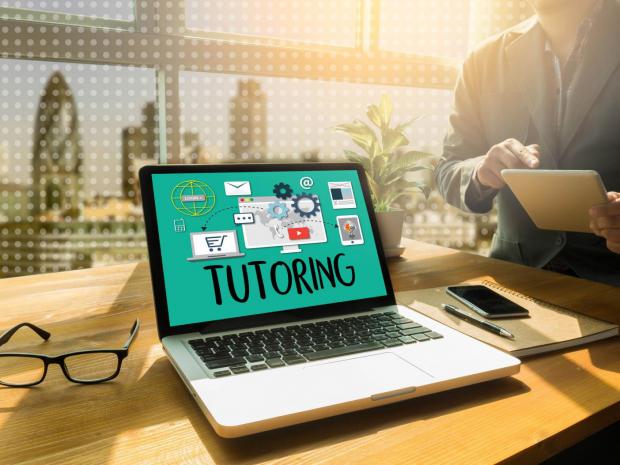Online Tutoring and Teaching: The Evolution of Education in the Digital Age
In recent years, the educational landscape has experienced a significant transformation with the advent of digital technology. Online tutoring and teaching have emerged as powerful tools, reshaping how we approach education. The shift from traditional classrooms to virtual learning environments has opened up new possibilities for students and educators alike. This comprehensive guide explores the rise of online tutoring and teaching, its benefits, challenges, and the future of this dynamic field.
The Rise of Online Tutoring and Teaching
Historical Context
The concept of distance learning is not entirely new. Correspondence courses began in the 19th century, where students received lessons through mail. However, the internet revolution of the late 20th and early 21st centuries has drastically changed the way education is delivered. The proliferation of high-speed internet and the development of digital communication tools have made online tutoring and teaching more accessible and effective than ever before.
Technological Advancements
The growth of online education is closely tied to advancements in technology. High-speed internet, cloud computing, and the widespread use of smartphones and tablets have all contributed to the popularity of online learning. Platforms like Zoom, Google Meet, and Microsoft Teams have become essential tools for virtual classrooms while learning management systems (LMS) like Canvas and Blackboard facilitate course administration and content delivery.
Innovative Educational Business Ideas: Shaping the Future of Learning
Benefits of Online Tutoring and Teaching
Flexibility and Convenience
One of the most significant advantages of online tutoring and teaching is the flexibility it offers. Students can access lessons from anywhere in the world, provided they have an internet connection. This eliminates geographical barriers and allows for a more personalized learning experience. For instance, a student in a remote area can receive high-quality instruction from a tutor based in a different country, broadening their educational opportunities.
Cost-Effectiveness
Online tutoring and teaching can be more cost-effective compared to traditional classroom settings. There are no commuting expenses or physical infrastructure costs involved. Many online tutors offer competitive rates, and students can choose from a variety of pricing options. Additionally, online resources such as e-books, videos, and interactive exercises can often be accessed for free or at a lower cost than traditional textbooks.
Access to a Wide Range of Expertise
The internet has democratized access to knowledge, allowing students to connect with experts from various fields. Online tutoring platforms often feature educators with specialized skills and qualifications, enabling students to receive instruction in niche subjects that may not be available locally. This exposure to diverse expertise can enrich the learning experience and provide students with valuable insights and perspectives.
Personalized Learning Experience
Online tutoring allows for a tailored learning experience that can be customized to meet individual needs. Tutors can use data and analytics to track student progress and adjust their teaching methods accordingly. This personalized approach helps address specific learning challenges and ensures that students receive the support they need to succeed. Additionally, online platforms often offer interactive tools such as quizzes and simulations that cater to different learning styles.

Challenges of Online Tutoring and Teaching
Technological Barriers
While technology has enabled the growth of online tutoring and teaching, it also presents challenges. Not all students and educators have access to reliable internet connections or modern devices. Technical issues such as software glitches or connectivity problems can disrupt lessons and hinder the learning process. Addressing these technological barriers is essential to ensure that online education remains accessible and effective for all participants.
Lack of Face-to-Face Interaction
One of the drawbacks of online learning is the reduced level of face-to-face interaction. While video conferencing tools facilitate virtual communication, they cannot fully replicate the social and emotional aspects of in-person interactions. Building rapport and establishing a strong teacher-student relationship can be more challenging in a virtual environment. Educators must find creative ways to engage students and foster a sense of community in online classrooms.
Self-Discipline and Motivation
Online learning requires a high degree of self-discipline and motivation. Without the structure of a traditional classroom, students may struggle with time management and staying focused. Online tutors must help students develop effective study habits and provide strategies for maintaining motivation. Additionally, the absence of a physical classroom can lead to feelings of isolation, which may impact a student’s overall engagement and performance.
Assessment and Evaluation
Assessing student performance in an online setting can be challenging. Traditional methods of evaluation, such as in-person exams and assignments, may not always translate well to a digital format. Educators need to develop innovative assessment techniques that accurately measure student progress and understanding. Online tools such as automated quizzes and digital portfolios can help address these challenges, but they require careful implementation and monitoring.
Best Practices for Online Tutoring and Teaching
Creating an Engaging Online Learning Environment
To ensure a successful online learning experience, educators should focus on creating an engaging and interactive environment. This involves using multimedia resources, incorporating interactive elements such as polls and discussions, and providing timely feedback. Incorporating a variety of teaching methods can help cater to different learning styles and keep students actively involved in the learning process.
Building Strong Relationships with Students
Establishing a strong relationship with students is crucial for effective online teaching. Educators should make an effort to connect with students on a personal level, offering support and encouragement. Regular communication, whether through virtual office hours or one-on-one meetings, can help build trust and foster a positive learning environment. Encouraging student participation and collaboration can also enhance the sense of community in an online setting.
Utilizing Technology Effectively
Educators should leverage technology to enhance the learning experience. This includes using tools such as virtual whiteboards, screen sharing, and multimedia presentations to make lessons more dynamic and engaging. Additionally, incorporating educational apps and online resources can provide students with additional support and enrichment opportunities. Staying updated on the latest technological developments and trends can help educators make the most of digital tools and resources.
Providing Clear Instructions and Expectations
Clear communication is essential in an online learning environment. Educators should provide detailed instructions for assignments, exams, and other activities to ensure that students understand what is expected of them. Setting clear goals and deadlines can help students stay on track and manage their time effectively. Additionally, providing regular updates and reminders can help keep students informed and engaged.
Encouraging Collaboration and Peer Interaction
Promoting collaboration and peer interaction can enhance the online learning experience. Educators can use group projects, discussion forums, and collaborative tools to facilitate student interaction and teamwork. Encouraging students to share their ideas and work together can help build a sense of community and improve overall learning outcomes.

The Future of Online Tutoring and Teaching
Evolving Technologies and Innovations
The future of online tutoring and teaching will be shaped by ongoing technological advancements and innovations. Emerging technologies such as artificial intelligence (AI), virtual reality (VR), and augmented reality (AR) have the potential to revolutionize online education. AI-powered tools can provide personalized learning experiences and automate administrative tasks, while VR and AR can create immersive learning environments that enhance student engagement and understanding.
Expanding Access and Inclusivity
As online education continues to grow, efforts will be made to expand access and inclusivity. This includes addressing technological barriers and ensuring that students from diverse backgrounds have equal opportunities to participate in online learning. Initiatives such as providing low-cost or subsidized devices and internet access can help bridge the digital divide and make online education more accessible to underserved communities.
Integrating Online and Traditional Education
The future of education will likely involve a blend of online and traditional learning approaches. Hybrid models that combine in-person and online instruction can offer the best of both worlds, providing students with flexible learning options while maintaining the benefits of face-to-face interaction. Educators will need to adapt their teaching strategies to effectively integrate online and traditional methods and create a cohesive learning experience.
Enhancing Data-Driven Decision-Making
Data-driven decision-making will play a crucial role in the future of online education. Analyzing student data and performance metrics can help educators identify areas for improvement and make informed decisions about instructional strategies. Advanced analytics tools and learning management systems will provide valuable insights into student progress and help tailor educational experiences to meet individual needs.
Online tutoring and teaching have transformed the educational landscape, offering new opportunities for students and educators alike. The flexibility, cost-effectiveness, and access to expertise provided by online learning platforms have made education more accessible than ever before. However, challenges such as technological barriers, reduced face-to-face interaction, and the need for self-discipline must be addressed to ensure a successful online learning experience.

As technology continues to evolve, the future of online education will be shaped by innovations such as AI, VR, and AR, as well as efforts to expand access and inclusivity. By embracing these changes and adopting best practices, educators can create engaging and effective online learning environments that meet the needs of students in the digital age.




Post Comment